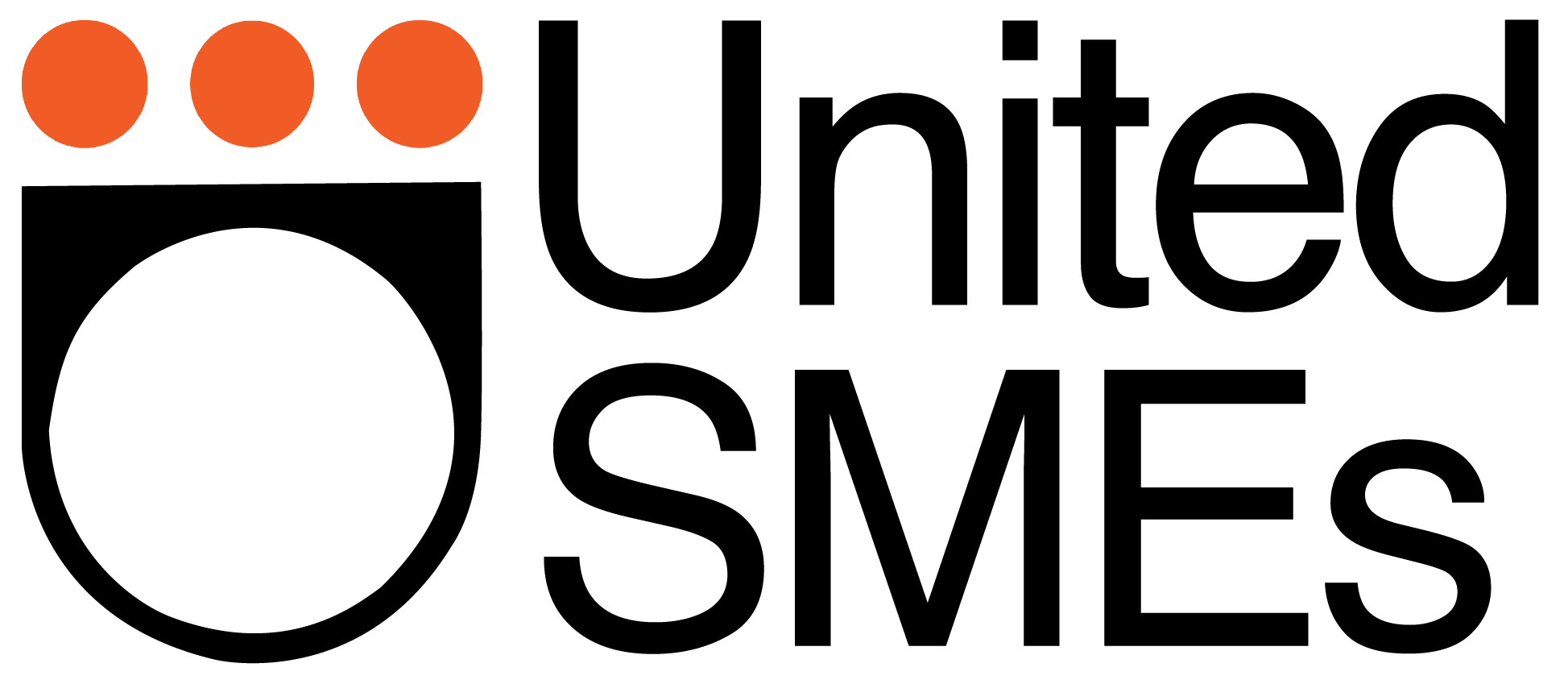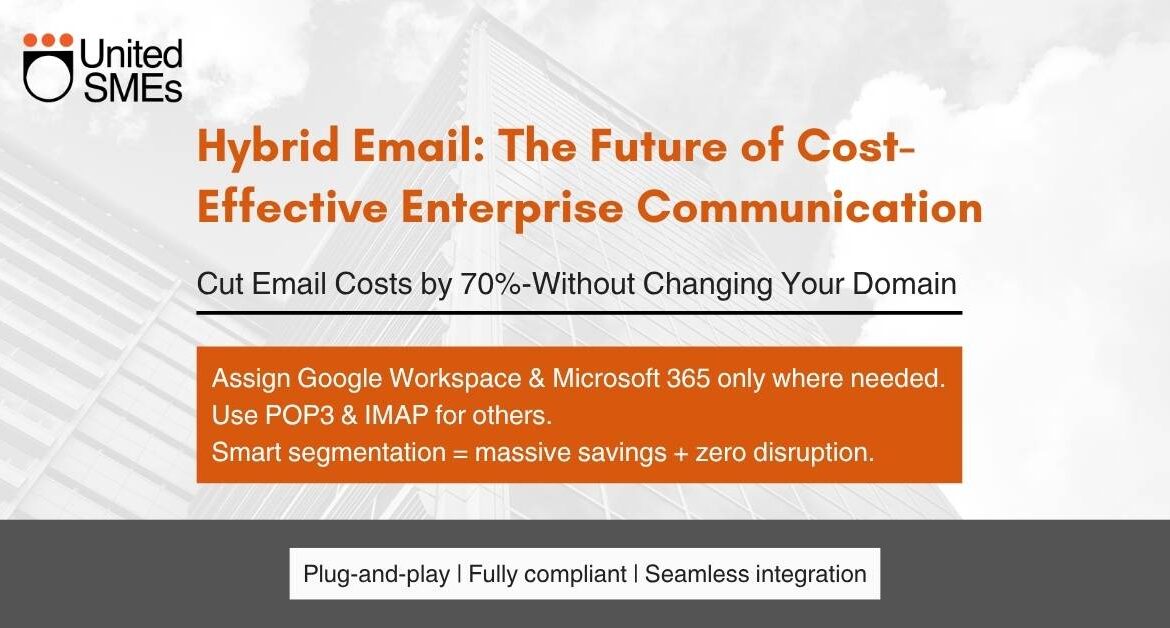In today’s digital-first world, email remains the backbone of enterprise communication. Businesses rely on robust, reliable email platforms to stay connected across teams, clients, and partners. Premium platforms like Google Workspace and Microsoft 365 dominate the market with their rich feature sets—but they also come at a steep cost. The reality is, not every employee needs the full suite of features these platforms offer.
That’s where the Hybrid Email System steps in as a game-changer—allowing you to retain all the benefits of leading email providers, cut down on licensing costs by up to 70%, and continue using your existing domain name without disruption.
What is a Hybrid Email System?
A Hybrid Email System is a flexible, scalable solution that blends multiple email technologies to match users’ actual needs. It allows you to integrate and co-exist with platforms like Google Workspace and Microsoft 365—all without changing your domain name.
This means you don’t need to switch your organization’s entire email infrastructure to a single provider. Instead, you can strategically segment users based on how they use email and assign them the right type of mailbox—whether it’s a feature-rich subscription or a cost-effective alternative.
The Problem With One-Size-Fits-All Email Subscriptions
Most organizations follow a uniform approach when it comes to email provisioning. Every employee—whether a C-level executive or a front-desk assistant—is given a full-featured email account that costs anywhere from ₹3,000 to ₹8,000 per user annually.
This method is simple but inefficient. The truth is:
- Remote and traveling users often need large mailboxes, mobile access, and multi-device sync.
- In-office users working on fixed desktops may only need basic email access.
- Top management might need all the bells and whistles—advanced security, compliance, collaboration tools, and 24/7 accessibility.
Treating all users the same leads to over-provisioning, inflated costs, and under-utilized features.
Hybrid Email System: A Smarter Alternative
The Hybrid Email System allows you to assign the right type of mailbox to each category of user, balancing performance with cost savings. Here’s how:
- All-Feature Mailboxes for Key Users
For management, leadership, and department heads who rely heavily on email collaboration, assign premium accounts via Google Workspace or Microsoft 365. These accounts come with rich feature sets and deep integrations with productivity tools. - IMAP Mailboxes for Mobile and Remote Users
For team members who are on the move or work remotely, IMAP mailboxes offer multi-device sync, webmail access, and adequate storage through pooled mailbox sharing. It’s a cost-effective alternative that still provides flexibility and accessibility. - POP3 Mailboxes for In-Office Staff
For employees who work exclusively on a fixed desktop and don’t require sync or advanced features, POP3 mailboxes are ideal. These accounts download and store mail locally, consume minimal server resources, and come at a fraction of the cost.
Key Features of the Hybrid Email System
✅ 50 GB Mailbox (Pooled): Mail storage is shared across users based on actual usage, avoiding over-allocation.
✅ Multi-Device Sync for IMAP Users: Ideal for mobile users and those working from multiple devices.
✅ Webmail & Client Support: Compatible with Outlook, Thunderbird, and other popular email clients.
✅ Antivirus & Antispam Filtering: Protects your network from phishing attacks, ransomware, and unwanted emails.
✅ Seamless Integration with Google Workspace & Microsoft 365: No need to migrate or change your domain name.
✅ DNS Splitter Technology: Distributes email flow efficiently between multiple platforms without compromising security or deliverability.
✅ Catch-All Mailboxes: Ensure no email goes unnoticed or undelivered.
Built-In Compliance and Control Mechanisms
Modern organizations require more than just email access—they need governance, control, and audit capabilities. The Hybrid Email System comes with a built-in Email Policy Server that allows IT admins to:
• Copy emails to supervisors for monitoring
• Intercept BCC and attachments
• Moderate outbound emails via approval workflows
• Enforce “internal-only” communication policies
• Create whitelists and blacklists for recipients and domains
This makes the solution particularly suitable for industries like finance, legal, education, and manufacturing where compliance and confidentiality are crucial.
Massive Cost Savings – Up to 70%!
By tailoring the mailbox type to user needs, organizations can dramatically reduce their licensing costs. You retain the full benefits of high-end email platforms where necessary, and complement them with cost-effective alternatives for other users.
For example:
• Instead of spending ₹2500 per user annually for 100 users (₹2,50,000), you can assign 20 premium accounts and 80 hybrid accounts—bringing down your total cost to nearly ₹1,00,000.
• That’s a 70% saving without compromising performance or continuity.
No Change in Domain Name. No Migration Hassle.
One of the biggest concerns organizations face when considering alternative email setups is the fear of domain disruption or migration complexities. The Hybrid Email System eliminates that entirely:
• Your domain name remains the same
• There is no impact on existing users or customers
• Migration is smooth, minimal, and handled with technical care
It’s a plug-and-play model that enhances your email infrastructure without rewriting it from scratch.
Final Thoughts
In an age where cost optimization is as important as digital transformation, the Hybrid Email System offers a smart, scalable, and secure solution to enterprise email needs. Whether you’re managing 10 users or 1,000, this approach allows you to:
• Customize features per user
• Improve security and compliance
• Scale without cost spikes
• Continue using your preferred domain and ecosystem
If you’re looking to optimize your email setup, cut unnecessary costs, and maintain enterprise-grade reliability, the Hybrid Email System could be your best next step.






